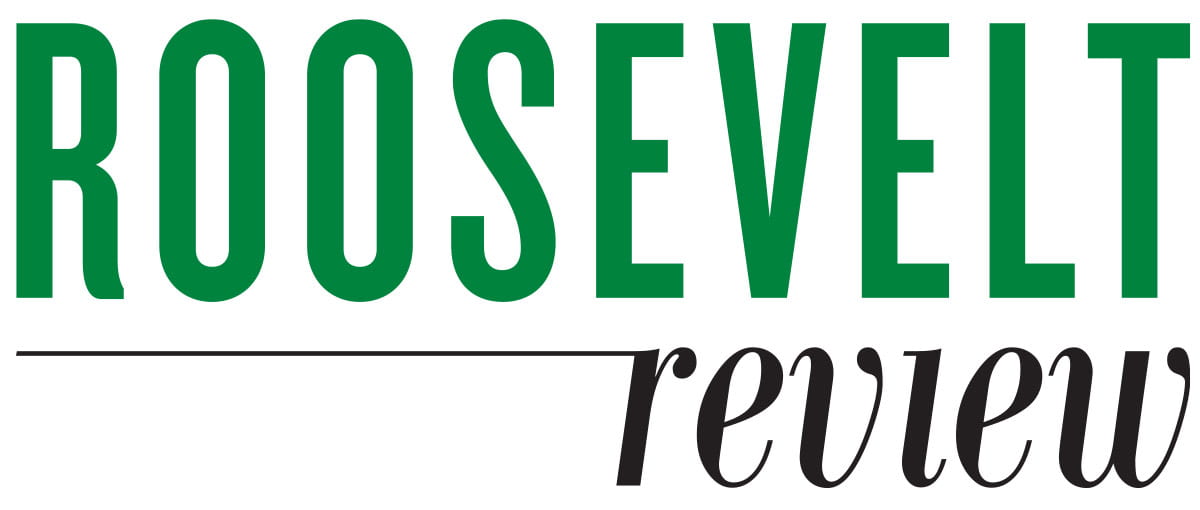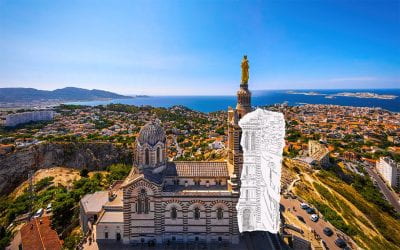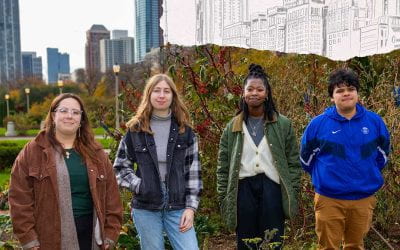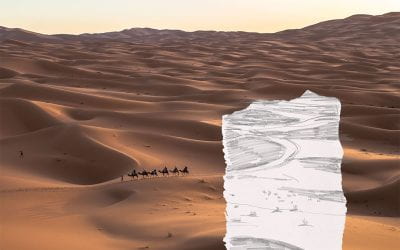Detained
Gage Gallery Exhibitionby Grace Heimerl (MS Integrated Marketing Communications, ’19)

Greg Constantine at the gallery opening
When visitors enter the Gage Gallery’s current exhibition, they hear the voices before they see any photographs. Speakers hung above Greg Constantine’s enormous panoramic prints play the recorded accounts of detained or deported immigrants, read aloud by Roosevelt University students.
“Sometimes I still have a weight that’s with me. Sometimes I dream I’m detained again. I dream that I am in prison and then I wake up and realize I’m not,” one student read. “Carlos, 21-year-old asylum seeker from El Salvador. Detained for 4 months and 2 days.”
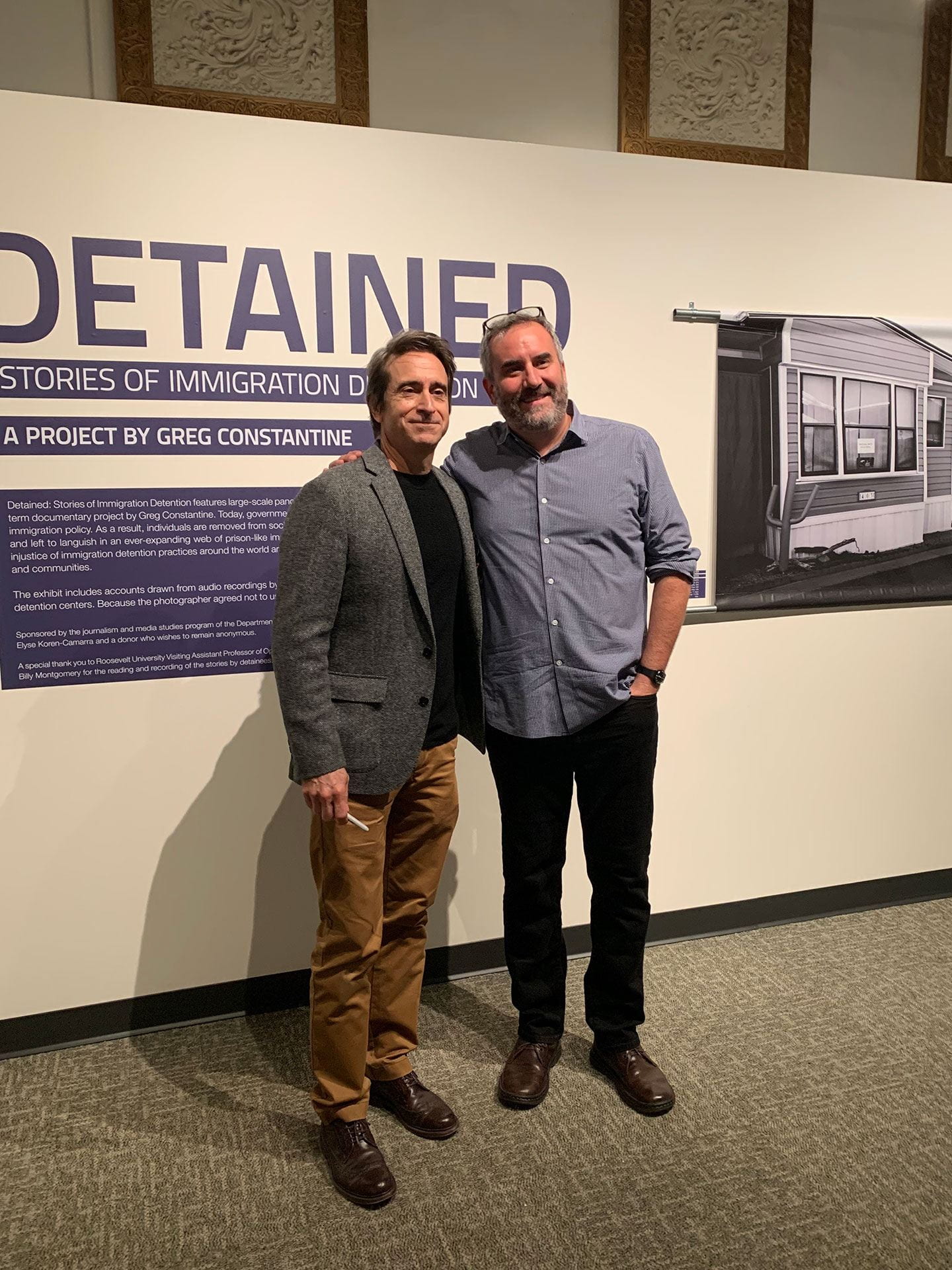
Constantine and photography professor Mike Ensdorf
After 48 minutes, the recording winds back on itself, playing in an endless loop.
The Gage Gallery at Roosevelt University has become a prime destination for socio-photojournalism, currently exhibiting a poignant, relevant new documentary project from photojournalist Greg Constantine. Over the last two years, Constantine conducted hundreds of hours of interviews and traveled thousands of miles to capture immigration detention centers in panoramic photographs, creating Detained: Stories of Immigration Detention.
The Gage Gallery is open 9 a.m.–1 p.m. Monday through Friday and 9 a.m.–5 p.m. on Saturdays. Detained: Stories of Immigration Detention will be on display through December 12, 2019.
Curating a stark reality
The 3′ by 9′ panoramic photographs capture their sheer immensity of 12 of the 211 detention centers throughout the United States. The black-and-white photographs don’t immediately look like detention centers, and present a side of the country not seen or experienced by many Americans.
“I wanted to create an experience that visitors couldn’t get online or in a publication. I wanted to do the work justice,” said gallery director and Professor of Photography Mike Ensdorf. “This was an exercise in empathy to present the immigrant experience in a way that feels meaningful.”
“I wanted to create an experience that visitors couldn’t get online or in a publication. I wanted to do the work justice.”
— Mike Ensdorf
Gallery director and photography professor
To accompany these photographs, Ensdorf tapped Susan Payne O’Brien and the voice performance students in Junior/Senior Opera Project to provide recordings of immigrants’ accounts that would protect their anonymity.
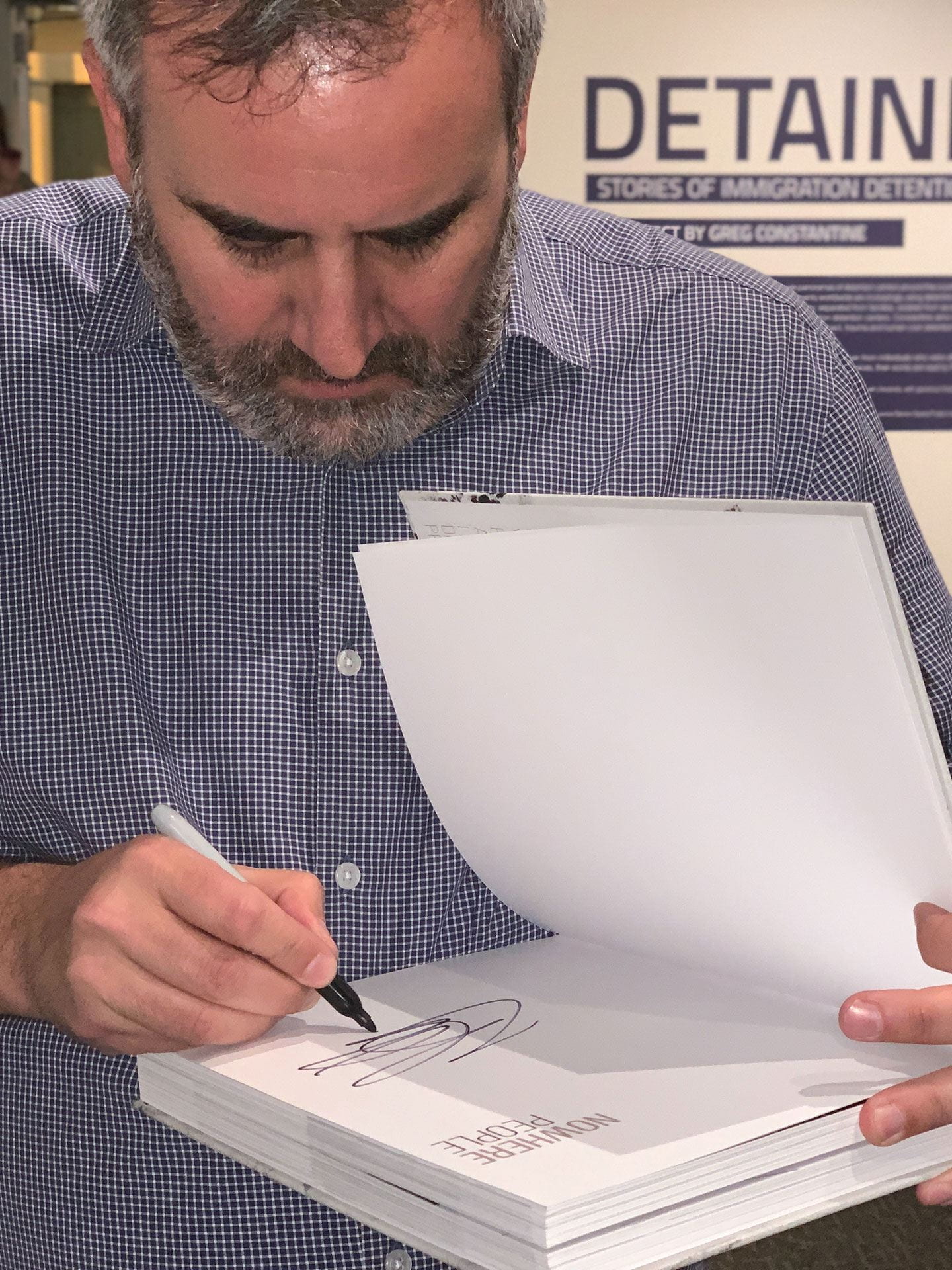
Greg Constantine
The Chicago College of Performing Arts students read aloud from transcripts of interviews that Constantine conducted during his journey across the United States. Many of the students had participated in the Considering Matthew Shepard residency the previous year, and were eager to continue their social-justice work.
“I presented the opportunity to my students as a way to grow as artists and to use their artistry as a vehicle for change,” O’Brien said. “They felt a great sense of responsibility to invest with empathy and truth in their recordings of the text.”
Capturing the stories of immigrants
Constantine attended the opening of the exhibit and explained to attendees the motivations and tactics behind his grant-funded project. After completing his previous project Nowhere People, also exhibited at the Gage Gallery, Constantine decided to return to the United States once President Trump was elected. As a photojournalist, he felt there were significant gaps in how the media covers the stories of detained immigrants.
“The architecture of the detention system has never been visually represented before,” said Constantine, who noted that detention centers are often simply reduced to points on a map. “These prints give the perspective of being there in person.”
“I have never had acting or singing students connect so deeply with material,” said O’Brien of the opportunity. “It was a powerful experience to see their ensemble investment in truthful and empathetic delivery of text.”
“I have never had acting or singing students connect so deeply with material. It was a powerful experience to see their ensemble investment in truthful and empathetic delivery of text.”
– Susan O’Brien
Visiting Assistant Professor of Opera Studies
Constantine is an internationally acclaimed photographer who has published three books of his documentary photography projects, but he told attendees that no one was willing to publish these photos. The Gage Gallery allowed him to see these photos printed so largely for the first time.
“The juxtaposition really sticks with me when they’re printed this big,” said Constantine. “You can see how these detention centers are buried in nothingness — of the desert, of farmlands, of industrial centers.”
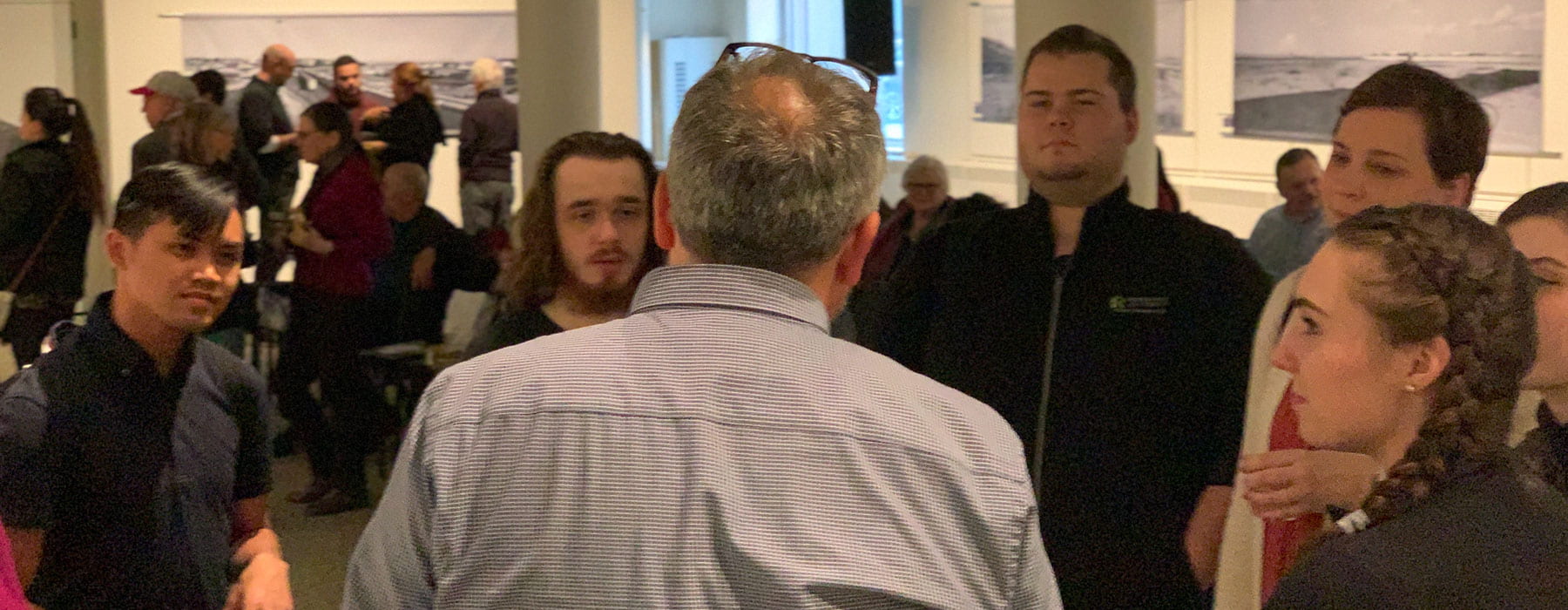
Constantine speaking with vocal performance students
Timely collaboration and connections
Everyone involved noted that they experienced a great level of collaboration throughout the completion and installation of this project. O’Brien said she witnessed her students display authentic performances through a profound connection with the text, something which moved Constantine as well.
“Many of the students who recorded narration were present at the opening and had the opportunity to speak with Greg Constantine. One of the first things he mentioned when he spoke to them was the honesty and emotional truth present in their delivery,” said O’Brien. “It was such a gift to see them receive that information and for them to feel that their investment and empathy had been a gift to the project.”
The project provided opportunities to connect with other Roosevelt professors, like journalism lecturer Billy Montgomery, who recorded the students in Roosevelt’s WRBC studio. Media studies students from John Fountain and Shonda Dudlicek’s classes held a press conference with Ensdorf on the curation process. Since the gallery serves a wide variety of ages, from grade school to photography enthusiasts, this collaboration allows new opportunities to engage with pressing social issues.
“A lot of people pitched in, so I would call it a collaborative curatorial project,” said Ensdorf. “And, it might give voice to the experiences of some students at Roosevelt.”
Constantine told gallery visitors that these photographs and interviews attempt to shed new light on an often murky topic.
“This information is being distributed now, when people need it,” said Constantine. “How do you humanize places like these? The fact is, our growing immigration detention system is devastating a lot of lives — and is something we need to come to terms with as Americans.”
More in this section
unexcused absence
Some of life’s most important lessons cannot be taught inside the four walls of a classroom. Matthew Beardmore’s travel has forced him to reassess how he thinks about work, family, politics, injustice and many other issues. He’s no longer tied to the beliefs of where he grew up.
traveling while home: self-discovery through the local
How can you make the long trip home if you don’t actually leave there? A partnership between Roosevelt University’s Honors Program and Chicago Architecture Center asks students to experience space and place as sites for action—not simply places we passively inhabit.
creating a new travel niche while wandering the globe
In early 2011, Sahara Rose De Vore bought a one-way ticket to Costa Rica. Over the next 10 years, she explored 84 countries. The self-discovery she experienced inspired her to launch two successful businesses—both helping others discover the benefits of travel.
